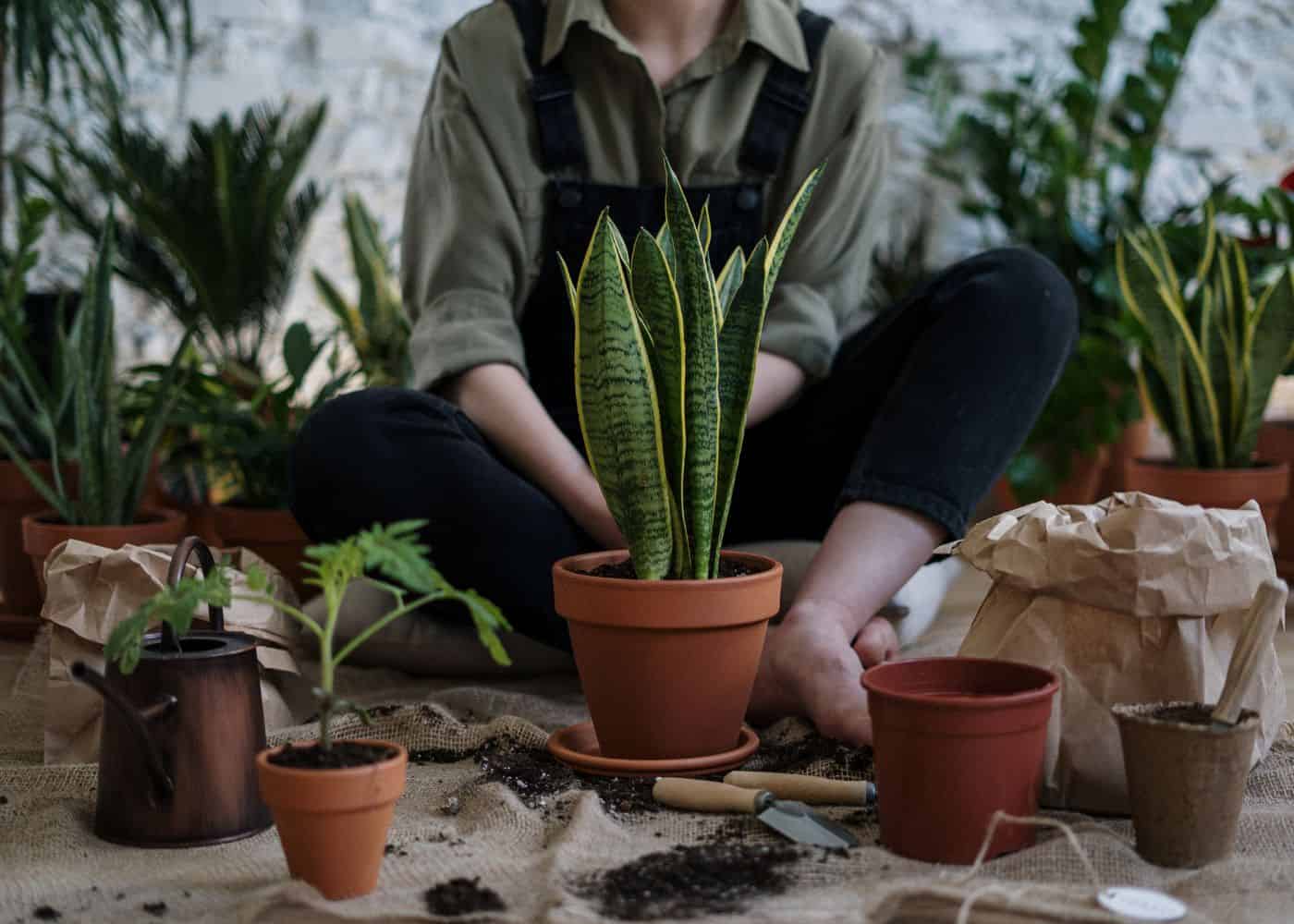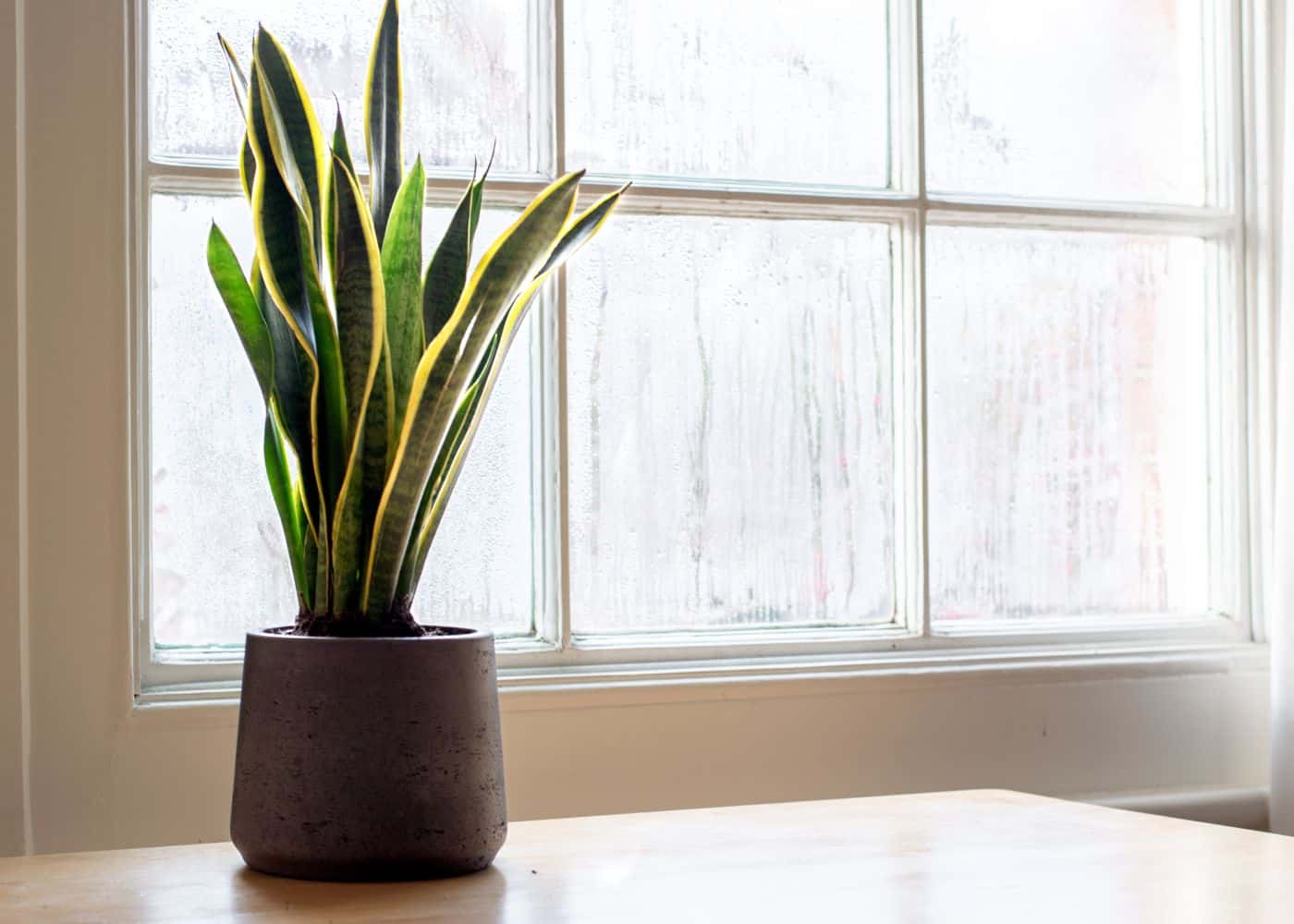Snake plants are famous around the world for their ease of care. Take a look at any plant pushed into a low-light corner in an office or shopping mall, and it’s probably a snake plant. Because learning how to grow snake plant is so easy, they are popular among beginners looking for decorative greenery that doesn’t require much attention.
Snake plants thrive off neglect. They can tolerate a wide range of lighting conditions and don’t need water very often, preferring their soil to dry out. Ensure the soil and container drains well and avoid overwatering which can quickly lead to root rot.
Snake plant growing preferences
In their native habitats around West and Central Africa, snake plants are accustomed to dry weather and warm temperatures. Thanks to their thick leaves that store water, they are able to handle periods of drought with ease. They are also one of the most tolerant houseplants you can find in terms of conditions they can handle, and they are able to adapt to a wide range of growing conditions without trouble.
Snake plants are usually recommended to beginner gardeners looking to grow houseplants but unsure of how to take care of them. As long as they are planted in the right soil and don’t get overwatered, they are remarkably easy to grow and handle neglect without fuss.
Their tolerance also makes them ideal for tricky spots in your home where nothing seems to grow. This plant, along with the ZZ plant (another tough species that can grow almost anywhere), doesn’t mind difficult environmental conditions – although they would obviously grow best in a prime spot.
If you live in a warmer tropical or sub-tropical climate, you can also grow snake plants outdoors. This is where I have most of mine as temperatures in my region don’t drop too low and they grow rapidly in a slightly sunnier area. However, if you live in a USDA Zone lower than 9, avoid planting them outdoors and keep them as houseplants instead.
Previously botanically classified under the Sansevieria genus, snake plants are now technically Dracaenas. But as this name change occurred relatively recently, the names are used interchangeably and you will often still see them labeled Sansevieria in nurseries or online.

How to grow snake plant
You can place your snake plant almost anywhere for a couple of months, and it will show no signs of struggle. However, if you want it to grow happily long-term, providing the conditions closest to its native habitat is recommended.
Light for snake plants
If you take a look at any of the ‘low-light houseplant’ lists online, snake plants likely appear near the top. They are known for tolerating low light conditions well, although growth will slow and the leaves will begin to stretch over time.
However, these conditions are quite different from what they are used to. In their native habitats, snake plants are largely found in full sun or partial shade rather than deeply shaded spots. Under these conditions, they grow much quicker and develop stronger leaves.
The ideal position to start out with will depend on where your snake plant was originally. If you purchased from the indoor plant section at your local nursery, they have likely adapted to partially shaded greenhouse conditions and will grow best in bright indirect light indoors.
If you’re moving a plant from outdoors in full sun conditions indoors, it will need a similar position to grow well. While they can adapt well over time, drastic changes in lighting conditions (such as low light to full sun or vice versa) will lead to growth problems.
I’ve found my indoor snake plants grow best in front of an east-facing window. They receive direct sunlight in the morning, but nothing too intense. In the afternoons they are shaded from any harsh direct light while benefitting from bright indirect light for the rest of the day.
Watering snake plants
Water is the one task you need to keep a close eye on – not because they need a lot of it, but because they can’t handle too much.
Snake plants have succulent leaves that draw up and store moisture for periods of drought. This means they don’t need water very often and are happy to let the soil dry out almost completely between waterings.
If you water when the soil is still moist (or if soil or container drainage is limited), excess moisture will sit around the roots, limiting airflow. If the soil does not drain quick enough, the roots lack oxygen and essentially start to suffocate. The excess moisture softens the roots and the base of the leaves, permanently damaging the structures that transport necessary water and nutrients around the plant.
In other words, overwatering your snake plants is a deadly mistake that is best avoided. Always test the soil before you consider watering, only watering again once the soil has just dried out. Mushy and drooping leaves that are beginning to yellow are a sign that you’ve watered too much.
If you notice the leaves losing their structure and beginning to shrivel, you’ve likely left the soil dry for too long. A quick watering should help them return to normal within a day or two.
Fertilizer for your snake plant
Snake plants are not heavy feeders reliant on frequent fertilizing. But when they are planted in containers, available nutrients get used up over time, especially if the plant is growing quickly. Replacing these nutrients by fertilizing or repotting will limit any growth problems later on while providing an essential boost that kickstarts leaf and root growth.
A balanced fertilizer with equal NPK ratios is recommended for snake plants growing indoors. Covering all the important macronutrients will ensure the plant has everything it needs to thrive. Apply once every two months during spring and summer only according to the instructions on the packaging to prevent overfertilizing.

Repotting snake plants
The only maintenance task you will need to think about every few years is repotting. Snake plants can quickly outgrow their containers in the right conditions, needing some extra space to spread if you want them to grow bigger. They also produce pups – small versions of the main plant – that appear next to the base of the plant and take up space.
If you leave these too long, it can negatively affect plant health and lead to stunted growth. I’ve left a snake plant so long without repotting that the growing pups ended up cracking the container. In other words, this is not a step you should skip.
Luckily, repotting is not a difficult task. Start by choosing a new container around one or two sizes up, with a few small containers if you want to remove any pups. Lift the plant out of its container and gently tease the roots, removing some old soil. Snap off any pups before replanting into a gritty succulent mix suitable for snake plants.
How to propagate snake plant
Propagating snake plants is a great way to add to your collection, dot these easy-care plants around your home or share them with friends and family (I often use propagated pups as gifts). There are two main methods used by home gardeners – division or leaf cuttings – with division being the fastest but requiring a more mature plant.
Dividing is a simple method best used when you’re repotting a mature snake plant. During the repotting process, gently divide the plant into multiple sections. If there are any pups present, you can remove those too as long as they are large enough. Make sure each section has at least one healthy leaf (preferably more) and some roots. Plant each section in its own container and care for it as you would a mature plant.
Propagating from cuttings is perfect if you have a smaller snake plant that isn’t ready to be divided. To do this, cut off a healthy leaf and split it into sections about 2-3 inches long. Let the cuttings sit out for a couple of days so the cut ends callous over. This prevents rot when the cutting is planted. After they’ve calloused, plant the cuttings upright in a well-draining soil mix, with the end that was closer to the base of the plant down. Water sparingly until you start to notice new growth, which should take a few weeks.

Common problems with snake plant
While snake plants are known for their resilience, they are not completely problem-free. These are some of the issues you may come across.
Overwatering
As mentioned, overwatering is a common problem among all houseplants, but particularly succulent snake plants. Signs of overwatering include yellowing and drooping leaves that cannot hold their shape. If you notice these symptoms, cut back on watering and check that your pot drains properly.
Pests
Though they aren’t common, snake plants can occasionally suffer from pest infestations. Mealybugs, spider mites and scale are the most common culprits. If you notice cotton-like spots, tiny webs or discolored dots on your plant, you may have a pest problem. Remove using insecticidal soap or horticultural oil until all signs of pest infestation have disappeared.
Brown leaf tips
Although snake plants can handle a wide range of conditions, they prefer moderate humidity levels over excessively dry air. If your environment is exceptionally dry, you may notice the leaf tips turning brown. To rectify this, move the plant to a better room with higher humidity or use a humidifier.
Sunburn
Snake plants can handle a range of lighting conditions, but direct sunlight for prolonged periods can cause leaf scorching when the plants are not accustomed to these conditions. The affected leaves will develop brown, crispy spots on the side of the plant closest to the light source. If your plant shows signs of sunburn, move it to a location with less direct sunlight exposure.







